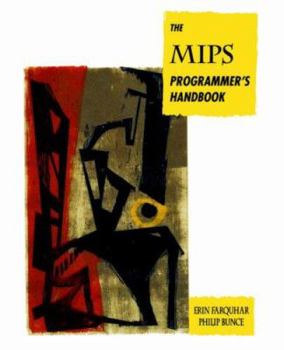The Mips Programmer's Handbook (The Morgan Kaufmann Series in Computer Architecture and Design)
Select Format
Select Condition 
Book Overview
A hands-on view of the highly successful MIPS family of microprocessors, written for programmers developing systems applications for the MIPS platform. The MIPS Programmer's Handbook describes the... This description may be from another edition of this product.
Format:Paperback
Language:English
ISBN:1558602976
ISBN13:9781558602977
Release Date:February 1994
Publisher:Morgan Kaufmann Publishers
Length:416 Pages
Weight:1.60 lbs.
Dimensions:0.9" x 7.5" x 9.3"
Customer Reviews
2 ratings
Great Book For MIPS Developers
Published by Thriftbooks.com User , 20 years ago
I have read several MIPS Application Books, and found Phil's Book is more practicle for us. With the great help from his book, I have finished designing IDT MIPS 79RC32334 BSP and Cache application, we design MIPS Test Bench for TeleCom IC function validation before Silicon tape out. While the reader should has some hardware background to have the better understanding, this book gives out detailed introduction for Cache/un-cacheable space Interrupt handle, How to override the low level library, such as use UART as debug tool, how to design vsprint and write your own printf() library, For nested interrupt and some skills for Assembly code and C code cross invoke, In one word, it is a great book for MIPS firmware engineer or Embedded SW engineer to develop their Embedded System. For some new beginner and SW engineer, they should read the MIPS data sheet carefully first, then to read this book will be more effective. MIPS has wide application, such as Linux server and Network Printer, it has powerful pipeline and cache function. In order to share my experience with those MIPS funs, I created my web-site to provide online help, but I will thank Phil and his great book first, because he ramp me up from a new beginer to an experienced MIPS Firmware Engineer. Thanks, Simon
Good book for computer science students!
Published by Thriftbooks.com User , 24 years ago
This book offers an overview of the assembler language, designed for the family of mips processors r2000 and r3000 (nothing about r4000 and r6000 series). It also shows common C-functions translated in assembler. It explains, in general guidelines, the internal architecture of the r2000 processor thus not as deep as D. Patterson's books.Beyond this, the text is a bit confused, the chapters don't lead the reader to any meaningful point, offering pieces of explanations thought for an already instructed reader. In fact a beginner won't find here a good introduction to the subject. E.g. at the very beginning, when the author deals with the structure of the registers (with many long, meaningless words without any explanation), does anybody know what a 'C0_BADVA' is? After that it goes along, is a single page, to the stack and the initialization of the eproms.If, on the other side, the reader already knows the subject, this book is a good and useful giude when he needs source codes and hits for his code writing. If someone wonders where a mips processor can be found... Uhm.. In a Playstation or in a handheld.Well this text is particulary suitable for courses dealing with computer science. Last but not least the price. In my humble opinion si quite hight for a 350 page-long book.






